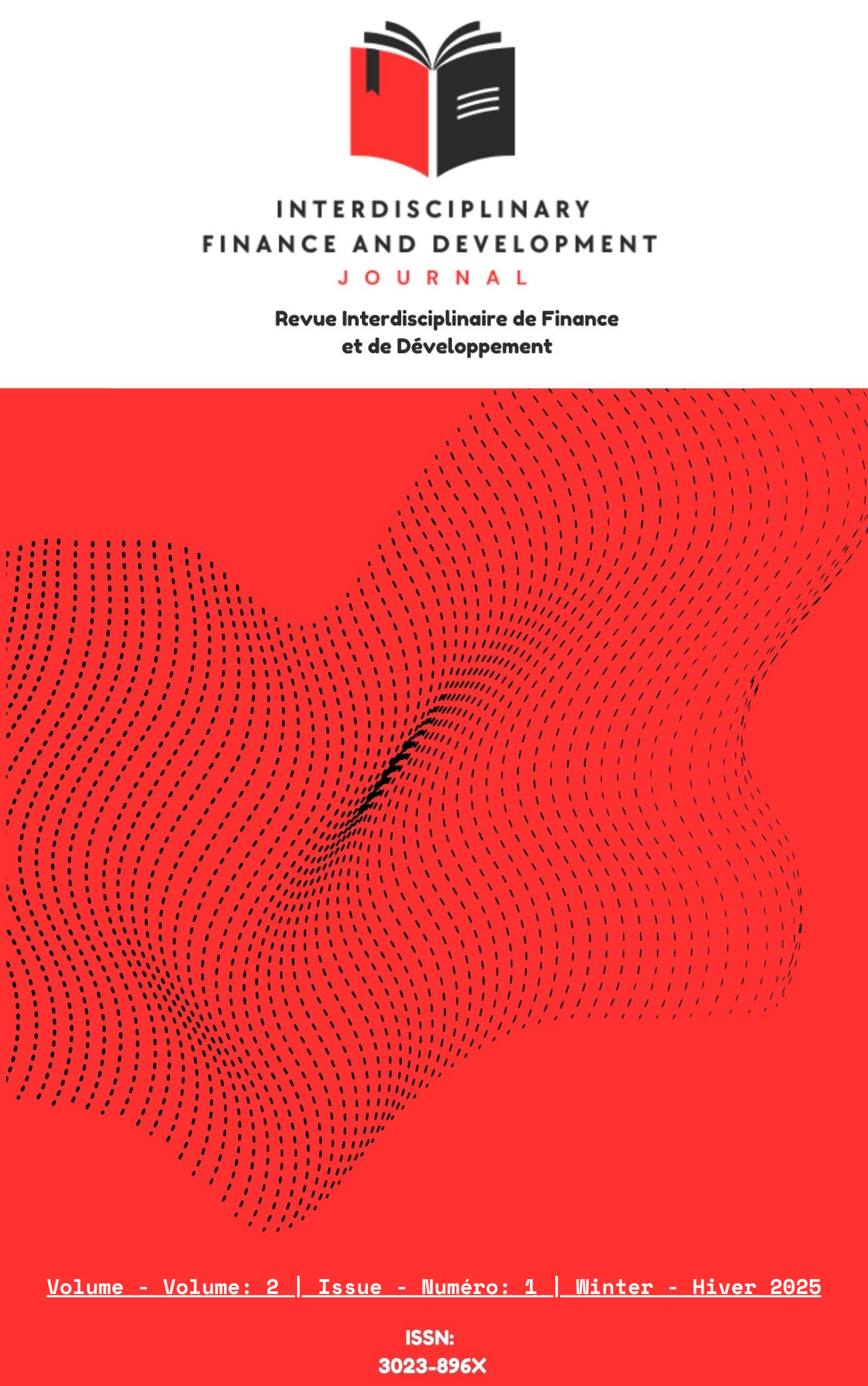The Impact of Mobile Connectivity and Governance on Regional Trade: An Empirical Analysis of Uganda and EAC
Keywords:
Uganda, East African Community, Trade Volume, Governance, Mobile Connectivity, Gravity ModelAbstract
This study investigates the impact of mobile connectivity and governance on regional trade within the context Uganda’s foreign trade with other East African Community (EAC) states. Mobile connectivity has been considered with the dimensions of FTS (Fixed telephone subscriptions -% of population), IUI (Individuals using the Internet-% of population), MCS (Mobile cellular subscriptions-% of population). Governance is measured by the dimensions of RQ (Regulatory Quality), GE (Government Effectiveness), VA (Voice and Accountability), PSAVT (Political Stability and Absence of Violence/Terrorism), RL (Rule of Law) and CC (Control of Corruption). We utilise panel data of Uganda, Kenya, Tanzania, Rwanda, and Burundi which are 5 of the current 8 members of the EAC whose data is available in the period of 1995 – 2022. We model the trade volume of Uganda with the other states by using the gravity model of international trade. The findings of the Fixed-Effects model indicate that FTS seems to be positively related with trade volume, while MCS seems to be negatively related with trade volume. RQ seems to be positively related with trade volume while GE seems to be negatively related with trade volume. Population Effect is also found to have a positive significant effect.
References
Abreo et al. 2021. “The Role of Institutional Quality in the International Trade of a Latin American Country: Evidence from Colombian Export Performance.” Journal of Economic Structures 10(1). https://doi.org/10.1186/s40008-021-00253-5.
Addisu Lashitew. 2022. “Digital Technologies Open Vast Business Opportunities in Africa.” Africa Business Magazine: 1–4.
Anderson, By James E, and Eric V A N Wincoop. 2003. “Gravity with Gravitas : A Solution to the Border Puzzle Author ( s ): James E . Anderson and Eric van Wincoop Source : The American Economic Review , Mar ., 2003 , Vol . 93 , No . 1 ( Mar ., 2003 ), Pp . 170- Published by : American Economic Association S.” 93(1): 170–92.
Anderson, James E. 2011. “The Gravity Model.” Annual Review of Economics 3: 133–60.
Andrés et al. 2015. “The Impact of Formal Institutions on Knowledge Economy.” Journal of the Knowledge Economy 6(4): 1034–62.
Anyanwu, John C., and Andrew E.O. Erhijakpor. 2014. “Does Oil Wealth Affect Democracy in Africa?” African Development Review 26(1): 15–37.
Asongu et al. 2021. “Not All That Glitters Is Gold: Political Stability and Trade in Sub-Saharan Africa.” Crime, Law and Social Change 75(5): 469–85.
Asongu, Simplice A., and Jacinta C. Nwachukwu. 2016. “The Role of Governance in Mobile Phones for Inclusive Human Development in Sub-Saharan Africa.” Technovation 55–56: 1–13. http://dx.doi.org/10.1016/j.technovation.2016.04.002.
Asongu, Simplice, and Jacinta C. Nwachukwu. 2017. “Mobile Phones in the Diffusion of Knowledge and Persistence in Inclusive Human Development in Sub-Saharan Africa.” Information Development 33(3): 289–302.
Asongu, Simplice, Sara le Roux, Jacinta C. Nwachukwu, and Chris Pyke. 2019. “The Mobile Phone as an Argument for Good Governance in Sub-Saharan Africa.” Information Technology and People 32(4): 897–920.
Baldwin, Richard, and Daria Taglioni. 2011. “Gravity Chains : Estimating Bilateral Trade Flows When Parts.” National Bureau of Economic Research (NBER) (January): 1–18. http://www.nber.org/papers/w16672.
Basedow et al. 2016. “International Trade and Good Regulatory Practices.” OECD Regulatory Policy Working Papers No. 4 (4).
De Benedictis, Luca, and Daria Taglioni. 2011. “The Gravity Model in International Trade.” The Trade Impact of European Union Preferential Policies: 55–89.
Berg, Hendrik Van den. 2004. International Economics. 1st ed. McGraw-Hill/Irwin.
Bergstrand, Jeffrey H., Peter Egger, and Mario Larch. 2013. “Gravity Redux: Estimation of Gravity-Equation Coefficients, Elasticities of Substitution, and General Equilibrium Comparative Statics under Asymmetric Bilateral Trade Costs.” Journal of International Economics 89(1): 110–21. http://dx.doi.org/10.1016/j.jinteco.2012.05.005.
Borrmann et al. 2006. “Institutional Quality and the Gains from Trade.” Kyklos 59(3): 345–68.
Brei, M., and G.v. Peter. 2017. “The Distance Effect in Banking and Trade- Working Paper 658.” Banking for International Settlements (658). https://www.bis.org/publ/work658.pdf.
Bruijn, Mirjam de, Francis Nyamnjoh, and Inge Brinkman. 2009. Mobile Phones: The New Talking Drums of Everyday Africa. https://www.jstor.org/publisher/langaarpcig. https://www.jstor.org/stable/j.ctvk3gmgv.
Cevik, Serhan. 2022. “Going Viral: A Gravity Model of Infectious Diseases and Tourism Flows.” Open Economies Review 33(1): 141–56.
Chasimidis, Anastasios. 2013. “Analysing Global Wheat Trade Using a Gravity Model.” (November): 32.
Chilangazi and Magasi. 2023. “View of Emerging Challenges in Implementing the Common Market Protocol for Free Movement of Goods in the East African Community.Pdf.”
Cooper, Richard N., and Jeffrey A. Frankel. 1998. “Regional Trading Blocs in the World Trading System.” Foreign Affairs 77(2).
Corbridge, Stuart. 1988. “The Debt Crisis and the Crisis of Global Regulation.” Geoforum 19(1): 109–30. https://www.sciencedirect.com/science/article/pii/S0016718588800083.
DAL, Süleyman. 2023. “Regional Integration in EURASIA.” Dergi Park: 0–1.
Dayanandan, Rejive. 2014. “Good Governance Practice for Better Performance of Community Organizations-Myths and Realities ! !” https://api.semanticscholar.org/CorpusID:46906464.
Disdier andHead. 2008. “The Puzzling Persistence of the Distance Effect on Bilateral Trade Author ( s ): Anne-Célia Disdier and Keith Head Source : , Vol . 90 , No . 1 ( Feb ., 2008 ), Pp . 37-48 Published by : The MIT Press Stable URL : Ht.” The Review of Economics and Statistics 90(1): 37–48.
Dixit, Avinash. 2009. “Governance Institutions and Economic Activity.” American Economic Review 99(1): 5–24.
E.A.C. 1999. “Overview of EAC.” https://www.eac.int/overview-of-eac (June 26, 2023).
Downloads
Published
How to Cite
Issue
Section
License
Copyright (c) 2025 Interdisciplinary Finance and Development Journal

This work is licensed under a Creative Commons Attribution 4.0 International License.



